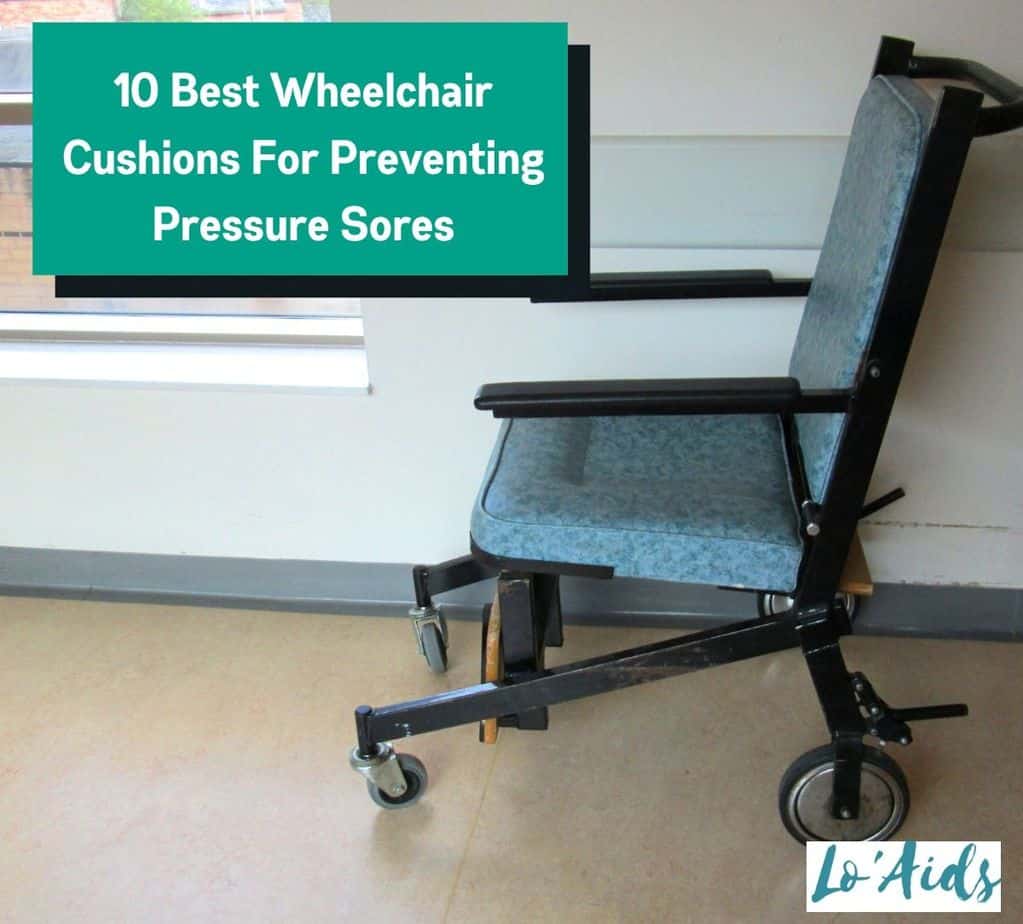Do you know how many wheelchair cushion types there are?
When shopping for a cushion for my grandmother, I spent hours researching which one was the best.
And I’m here to share the fruits of my labor with you and help you pick the best wheelchair cushion for you or your loved one.
Just keep reading.
Table of Contents
Quick Summary
- Depending on their material, you can choose between six main types of wheelchair cushions.
- The cushion’s shape determines the type of support it provides and what medical condition it’s best for treating.
- Consult a professional if you’re unsure which cushion type suits your wheelchair.
READ MORE: Top 10 Wheelchairs of 2022
6 Types of Wheelchair Cushions By Material
Foam, gel, air, and thermoplastic urethane are the most popular materials manufacturers use to produce wheelchair cushions. Let’s talk about them in detail and what’s good and bad.
1. Foam Cushions
In general, foam is the most popular type of wheelchair cushion. It provides excellent structure, stability, and comfort by conforming to your body type.

This type of cushion is also affordable, lightweight, easy to maintain, and available in a wide range of sizes/thicknesses.
However, foam cushions quickly lose shape, so you must replace them often. They also don’t distribute body weight as efficiently as other types.
2. Air Cushions
Air wheelchair cushions have chambers (cells) filled with air. They’re a great choice to avoid pressure ulcers because the air can travel between the chambers, conforming to the user’s body.
These types of cushions also distribute body weight well and provide adequate shock absorption when you’re on the move.
But according to the Academy of Neurologic Physical Therapy, “Cushion must be inflated correctly with a manual pump to have pressure relieving effects.” (1)
Moreover, this Air/ Roho cushion for wheelchair isn’t perfect for people that move around much since it doesn’t provide a stable posture.
3. Gel Cushions
Gel wheelchair cushions have a foam base surrounding a gel pocket. They’re an excellent choice if you’re looking for comfort and a cooling effect.

Gel cushions with contorted bases are also great for correcting poor posture, and they distribute body weight well to reduce the occurrence of pressure ulcers.
However, these are heavier cushions. They’re not very easy to transfer on/off and will add weight to your chair. There’s also a risk of the gel leaking or breaking.
Don’t forget to check our guide on how to choose the best gel wheelchair cushion.
4. Honeycomb Cushions
Honeycomb is one of the most comfortable wheelchair cushions. It’s designed in a matrix, resembling a honeycomb, to regulate temperature and increase airflow.
It’s lightweight, flexible, and easy to clean. I also like it because it retains less moisture than other wheelchair cushion types and absorbs shock well since it’s made from thermoplastic urethane.
However, it has a modern pressure distribution and is not the best choice for people with spinal cord injuries.
Watch this video to see what a honeycomb cushion looks like.
Also, don’t forget to check our guide on how to clean a wheelchair cushion.
5. Hybrid Cushions
A hybrid cushion combines air and gel to provide maximum pressure relief, posture stability, and weight distribution.
It’s also a great choice to treat current pressure ulcers, but it’s not suitable for people with pelvic asymmetry.
6. Alternate Pressure Cushion
Alternate pressure is one of the newest types of cushions for wheelchairs. It’s durable, lightweight, and portable but runs on batteries.
It features an automatic pressure distribution to deal with sores and ulcers and is excellent for people that can’t adjust their position.
However, you need to keep it charged, and it’s one of the most expensive types of cushions. Watch this video to learn more about this innovative type of cushion.
Types of Wheelchair Cushion By Shape
Besides material, cushions for wheelchairs also differ by shape and the extent of support they provide for the user. The most common forms are:
- Contoured cushion. It’s the best choice if you have a posterior pelvic tilt and look downwards when sitting.
- Anti-thrust wheelchair cushion. It’s for patients with anterior pelvic tilt (you look upwards when sitting).
- Wedged-shaped. This type is for people that slump forward, promoting a normal lumber curve.
- Saddle-shaped. Choose this type if you’re looking for pelvic stability.
- No-lean cushion. It’s for people with pelvic obliquity and prevents them from leaning to one side when seated.
- Other shapes include amputee cushions, zero elevation cushions, and pommel cushions.
But do you really need a wheelchair cushion? Let’s find out.
Do You Need a Wheelchair Cushion?
Most standard cushions don’t offer the support and comfort you need when spending long periods of time in a wheelchair.
So, you need a wheelchair cushion. And you have to select it carefully to ensure it matches your needs, or it can worsen your condition. Moreover:
- Wheelchair cushions are essential for a healthy posture. As the occupational therapist Jo Southall says, “Good posture promotes good function, minimises fatigue, and reduces injuries.” (2)
- They can prevent pressure ulcers or injuries by distributing your body weight evenly.
- The right cushion makes it comfortable to sit in the wheelchair for a prolonged period of time and offers pressure relief.
- The best wheelchair cushions absorb shock and make it easy to transfer in/off the wheelchair.
If you’re unsure which cushion type is right for you, speak to your physical therapist. And don’t forget to measure the cushion well to ensure it’s a perfect fit for your wheelchair.
FAQs
How Thick Should a Wheelchair Cushion Be?
The cushion should be thick enough to provide adequate support and pressure relief. Most cushions are between 1 to 4″ in thickness.
What Type of Cushion Is Best For Pressure Sores?
High-quality gel cushions are one of the best wheelchair cushions for preventing pressure sores. But air cushions also have excellent pressure-reducing properties.
How Often Should a Wheelchair Cushion Be Replaced?
You should replace your wheelchair cushions every three years or when the gel/air starts leaking and breaking.
Conclusion
As you can see, you’ve got plenty of wheelchair cushion types to choose from. To find the right one, consider what matters the most to you – comfort, posturing, or pressure relief.
When picking a cushion type, don’t forget to consider your weight. Bariatric cushions are more suitable for overweight patients since they provide better cushioning and stability.
And don’t forget to consult with your doctor or physical therapist if your cushion isn’t working as well as you expected.

What do you think about these wheelchair cushion types? Which one is the most comfortable? Share your thoughts in the comment section.
Resources:
- 1. Uehara E, Larson C. Wheelchair Cushion Fact Sheet A Special Interest Group of Fact Sheet [Internet]. Available from: https://www.neuropt.org/docs/default-source/sci-sig/fact-sheets/wheelchair-cushion-fact-sheet.pdf?sfvrsn=c6865343_2&sfvrsn=c6865343_2
- 2. JBOT. Wheelchair Cushion Guide [Internet]. Jo Southall, Independent OT. 2016 [cited 2022 Nov 5]. Available from: https://jboccupationaltherapy.co.uk/wheelchair-cushion-guide/





